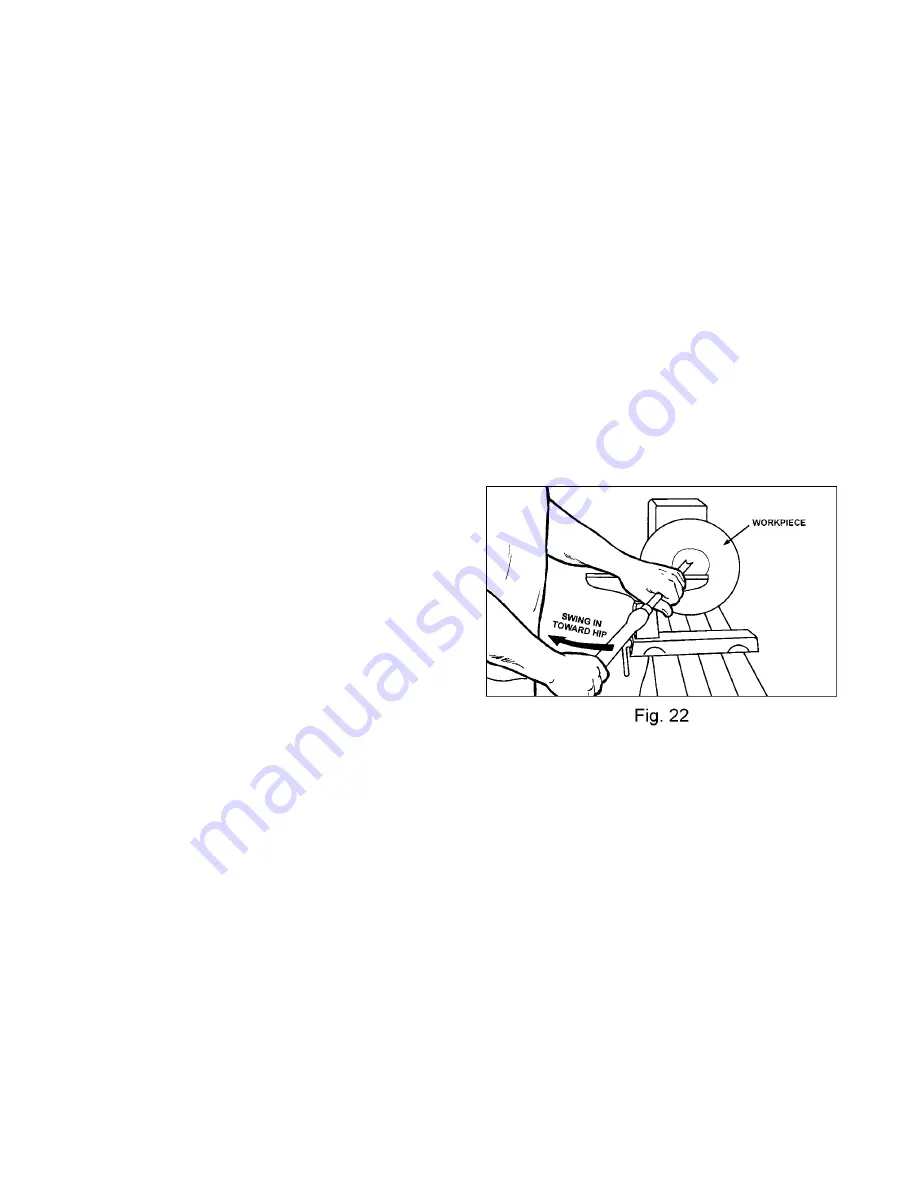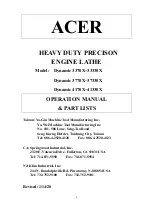
19
To Shape Interior of Bowl
1. Stop lathe and move tailstock away.
Remove center from tailstock to prevent
bumping it with elbow.
2. Adjust tool support in front of the bowl just
below centerline, at a right angle to the lathe
bed.
3. Rotate workpiece by hand to check
clearance.
4. Face off top of bowl by making a light
shearing cut across the workpiece, from rim
to center.
5. Place 1/2" bowl gouge on tool rest at center
of the workpiece with the flute facing top of
bowl. The tool handle should be level and
pointed toward four o'clock, see Figure 22.
6. Use left hand to control cutting edge of
gouge, while right hand swings tool handle
around toward your body, see Figure 22.
The flute should start out facing top of
workpiece, and rotate upward as it moves
deeper into the bowl to maintain a clean
even curve. As tool goes deeper into bowl,
progressively work out toward rim. It may be
necessary to turn the tool rest into the work
piece, as you get deeper into the bowl.
Note: Try to make one, very light
continuous movement from the rim to the
bottom of the bowl to ensure a clean,
sweeping curve through the workpiece.
Should there be a few small ridges left, a
light cut with a large domed scraper can
even out the surface.
7. Develop wall thickness at the rim and
maintain it as you work deeper into the bowl.
When the interior is finished, move tool
support to exterior to re-define bottom of
bowl. General rule of thumb: the base
should be approximately 1/3 the overall
diameter of the bowl.
8. Work the tight area around faceplate or
chuck with 1/4" bowl gouge.
Sanding and Finishing
1. Remove the tool rest and begin with a fine
grit sandpaper (120 grit) and progress
through each grit, using only light pressure.
Coarser sandpaper tends to leave deep
scratches that are hard to eliminate. Use
power-sanding techniques to avoid
concentric sanding marks around your
finished piece. Avoid rounding over the rim
and foot with sandpaper. Try to keep
details crisp. Finish sanding with 220 grit.
2. Remove sanding dust with tack rags, or
compressed air and, with lathe turned off,
apply first coat of finish. Let stand for
several minutes, wipe off excess. Allow to
dry before sanding again with 320 or 400 grit
sandpaper.
3. Turn lathe back on and make a separation
cut through the base. Stop at about 3" and
use a small fine tooth saw to separate the
bowl from the waste.
4. Apply additional finish coats and allow to dry
before buffing.
Summary of Contents for JWL-1442VS
Page 22: ...22 Bed Assembly...
Page 24: ...24 Headstock Assembly...
Page 28: ...28 Wiring Diagram...






























